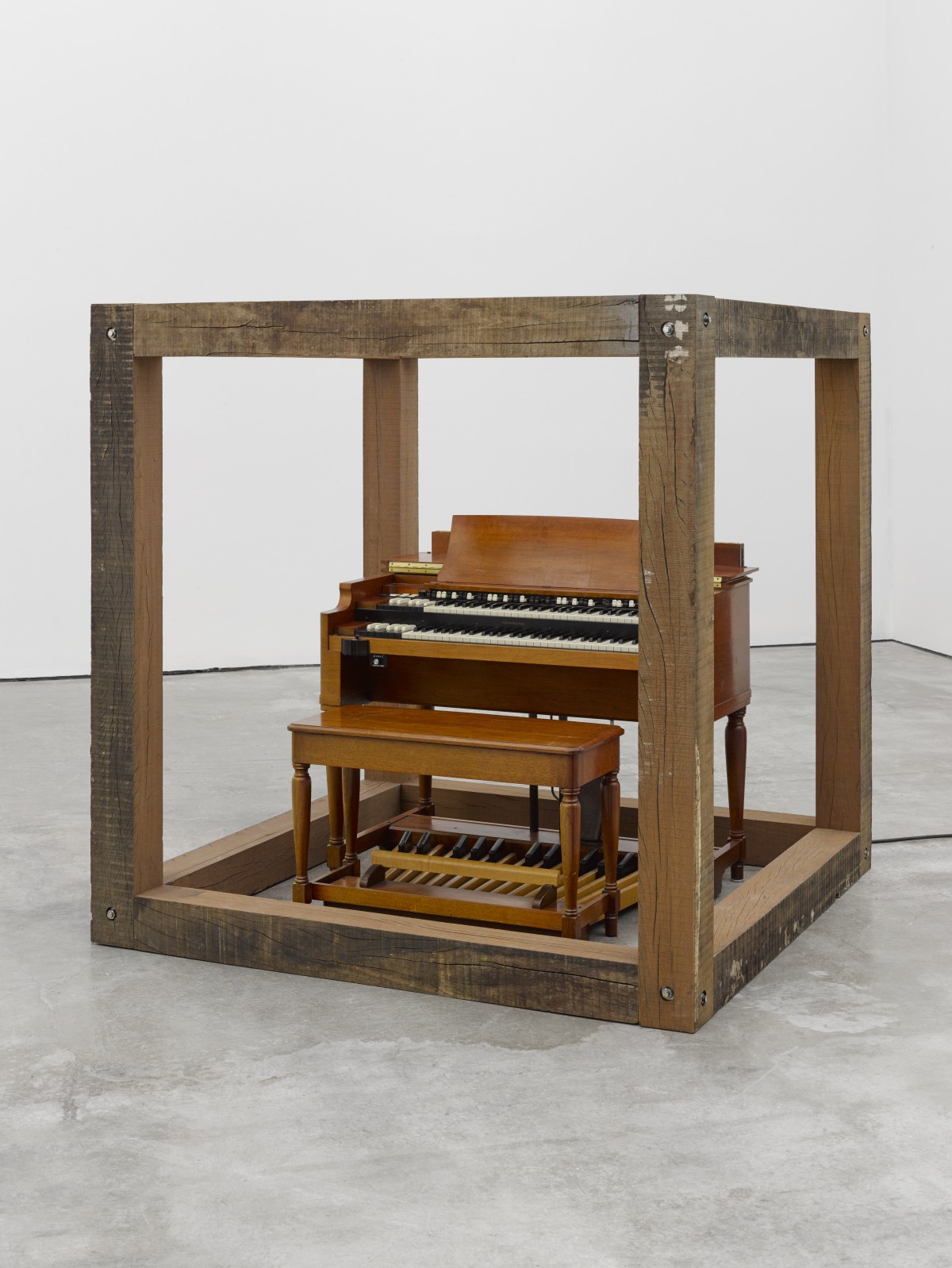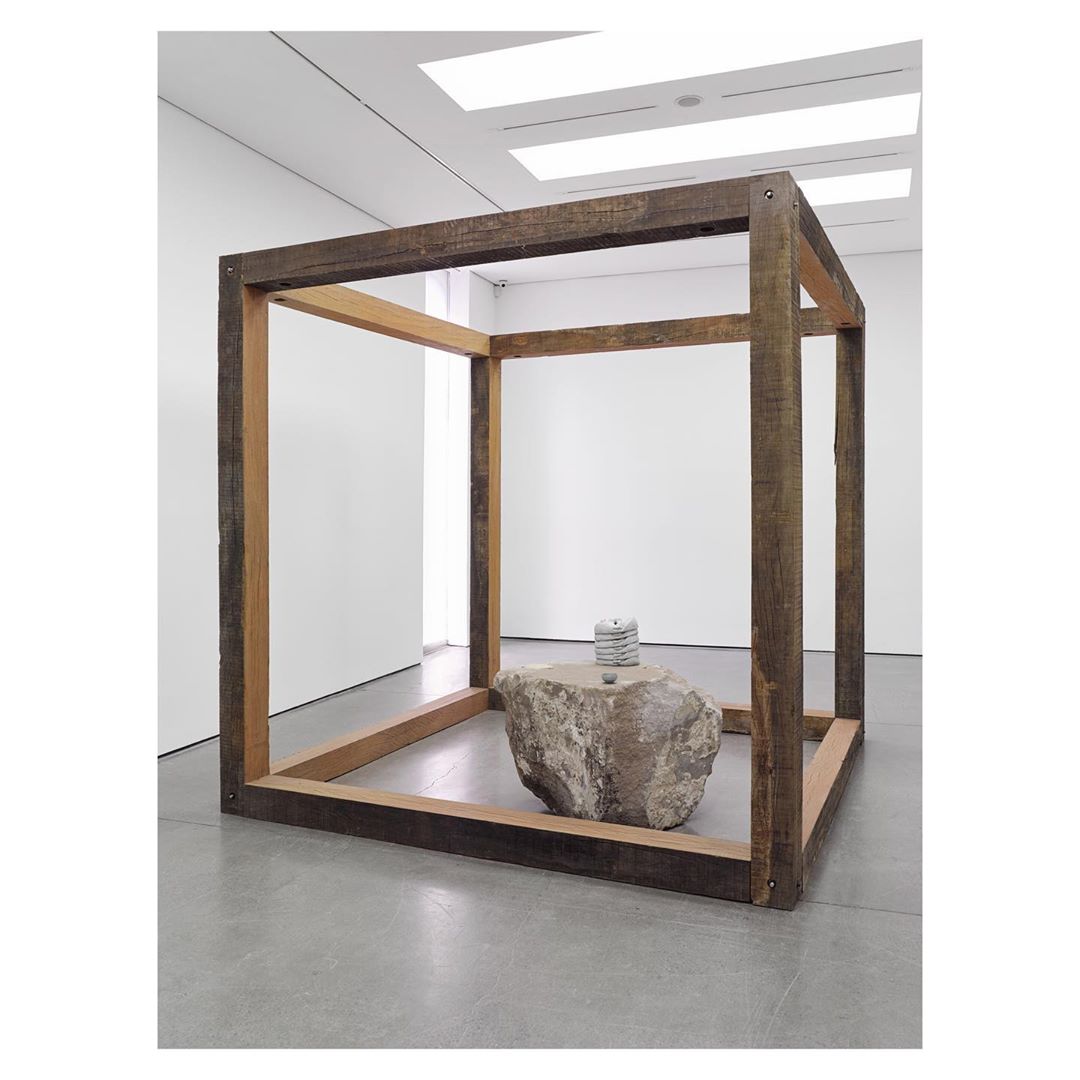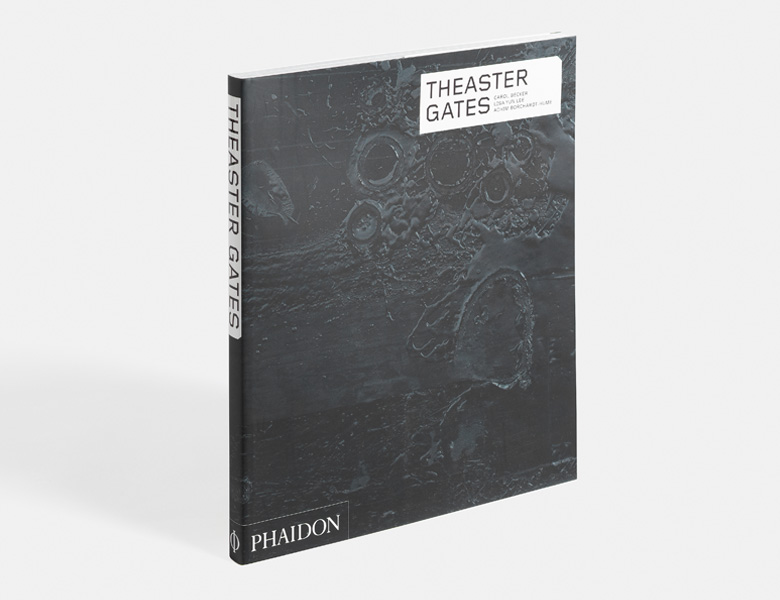
Theaster Gates puts a Hammond organ in his new show
The artist sees shared beauty and culture in the classic instrument and some accompanying ceramics
The Hammond B3 organ was developed as a cheap alternative to a fully functioning church organ, but its wavering sound – not wholly appreciated by traditional pipe-organ enthusiasts - was adopted by notable African-American soul and jazz musicians during the 1960s, most notably Jimmy Smith and Booker T Jones.
Now, one well-preserved example of this 20th century instrument is also finding admirers in the London artworld, as it goes on display at Theaster Gates’ new London show in White Cube Mason's Yard.

Gates has found new uses for old materials before; he has turned old fire hoses into framed, abstract wall pieces; he’s taken derelict, American churches to the Venice Biennale; and he’s repurposed an old Chicago bank as a community arts centre.
Obviously, these aren’t simple exercises in nostalgia. The objects he argues, “are endowed with a life of their own.”
And Gates is uniquely well-placed to find beauty and vitality in the most unlikely places. Rather than take a conventional, fine-art route into the gallery system, he studied urban planning, ceramics, and religious studies.
His new London exhibition, called Afro-Mingei, draws on some of these enthusiasms. The show runs until 21 June, and brings together items of African-American significance, such as the Hammond Organ, alongside works that recall the mingei movement, a term coined by the Japanese philosopher and cultural figure Soetsu Yanagi, along with potters Shoji Hamada and Kanjiro Kawai, in the early 20th century, which, as White Cube explains, “denotes folk or craft objects made by local, unknown craftsmen.

“For Yanagi, craft challenged conventional ideas of art and beauty, since it evolved from traditional practices where the divisions between art, philosophy and religion had merged or disappeared.”
Gates has admired Japanese pottery for much of his career; back in the early 2000s he made up the tale of Shoji Yamaguchi, a fictional ceramicist who, as Gates tells it, settled in the black community of Mississippi to make pots.
There’s no such artifice in this show. Instead, the simple pots and the janky old organ are a way, says White Cube, for the artist to “retrace cultural roots that are often submerged and forgotten within the structure of what Gates terms ‘Western-White sameness’. Gates’s practice poses nuanced questions about cultural production as a means to foreground a new type of cultural hybridity. In this exhibition, two key strands of his work – Japanese philosophy and Black identity – combine to forge a new aesthetic.”

You can get a better grip on Gates’s varied art and practice, by getting hold of a copy of our Contemporary Artist Series book dedicated to him. Meanwhile, for more on contemporary ceramics, check out our 100 artist strong survey Vitamin C: Clay and Ceramic in Contemporary Art.